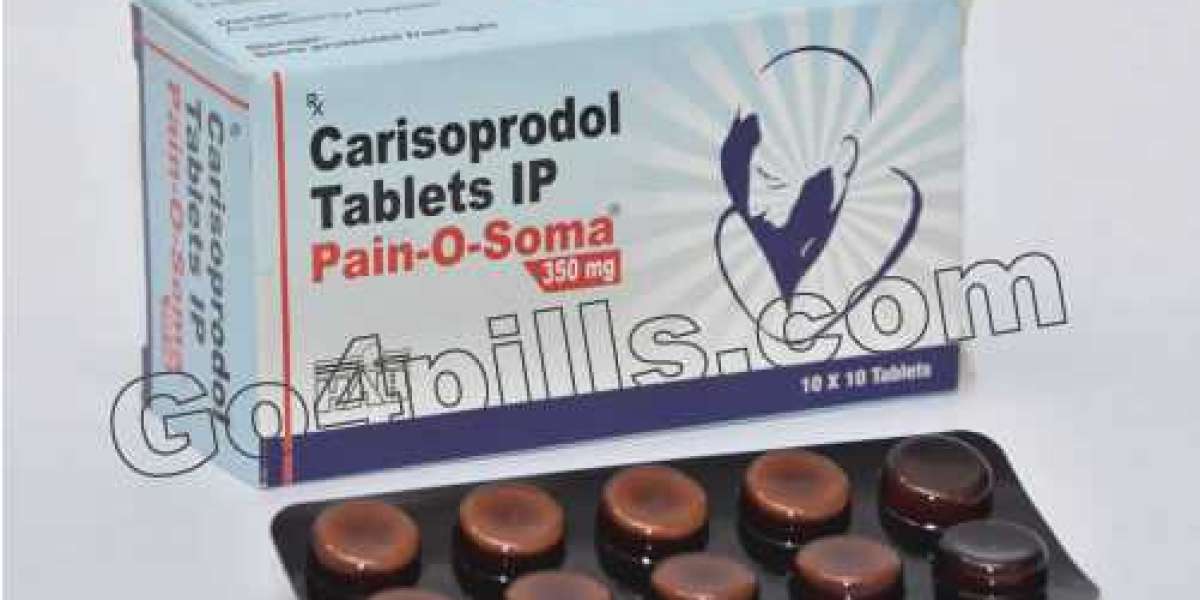Mechanism of Action
Central Nervous System Effects
Pain O Soma 350 mg exerts its effects primarily within the central nervous system (CNS), where it acts as a GABA-A receptor modulator. By enhancing the inhibitory neurotransmission mediated by gamma-aminobutyric acid (GABA), it promotes muscle relaxation and reduces the perception of pain. This mechanism of action sets it apart from other muscle relaxants, making it a preferred choice for certain patients.
Analgesic Properties
In addition to its muscle relaxant effects, Pain O Soma 350mg also possesses analgesic properties, further enhancing its utility in pain management. By altering pain perception at the spinal cord and brain levels, it provides relief from both nociceptive and neuropathic pain conditions. This dual mechanism of action makes it a versatile medication for addressing various types of musculoskeletal pain.
Clinical Efficacy
Efficacy in Acute Pain
Clinical studies have demonstrated the efficacy of Pain O Soma 350 mg in the treatment of acute musculoskeletal pain. In controlled trials, patients receiving Pain O Soma 350 mg reported significant reductions in pain intensity compared to placebo. Furthermore, its rapid onset of action allows for prompt relief, enhancing patient satisfaction and compliance with treatment.
Long-Term Benefits
Beyond its acute pain-relieving effects, Pain O Soma 350 mg may also offer long-term benefits for chronic pain conditions. By addressing underlying muscular dysfunction and promoting relaxation, it can help mitigate the development of secondary complications such as muscle stiffness and reduced mobility. This proactive approach to pain management is essential for improving overall quality of life in patients with chronic musculoskeletal disorders.
Safety Profile
Relative Safety
While Pain O Soma 350 mg is generally well-tolerated when used as directed, it is not without risks. Like other medications in its class, it carries a potential for side effects such as drowsiness, dizziness, and gastrointestinal upset. However, these adverse reactions are typically mild to moderate in severity and resolve with continued use or dose adjustment.
Risk of Dependence
One of the primary concerns associated with Pain O Soma 350 mg is its potential for misuse and dependence, particularly in individuals with a history of substance abuse. Prolonged use or high doses may lead to tolerance, physical dependence, and withdrawal symptoms upon discontinuation. Therefore, it's crucial to use this medication judiciously and monitor patients closely for signs of misuse or addiction.
Patient Education and Counseling
Importance of Patient Education
Effective communication and patient education are essential components of successful pain management with Pain O Soma 350 mg. Healthcare providers should take the time to explain the purpose, benefits, and potential risks of the medication to patients and their caregivers. This empowers patients to make informed decisions about their treatment and encourages adherence to prescribed regimens.
Counseling on Safe Use
In addition to providing information about the medication itself, healthcare providers should offer guidance on safe and responsible use of Pain O Soma 350 mg. This includes emphasizing the importance of following dosage instructions, avoiding alcohol and other sedatives, and refraining from activities requiring mental alertness until the effects of the medication are known.
Conclusion: Optimizing Pain Management with Pain O Soma 350 mg
In conclusion, Pain O Soma 350 mg is a valuable asset in the arsenal of medications available for the management of musculoskeletal pain. Its unique mechanism of action, clinical efficacy, and relative safety make it a preferred choice for many patients and healthcare providers alike. By understanding its pharmacology, clinical utility, and potential risks, we can maximize its benefits while minimizing adverse outcomes, ultimately improving patient outcomes and quality of life.














